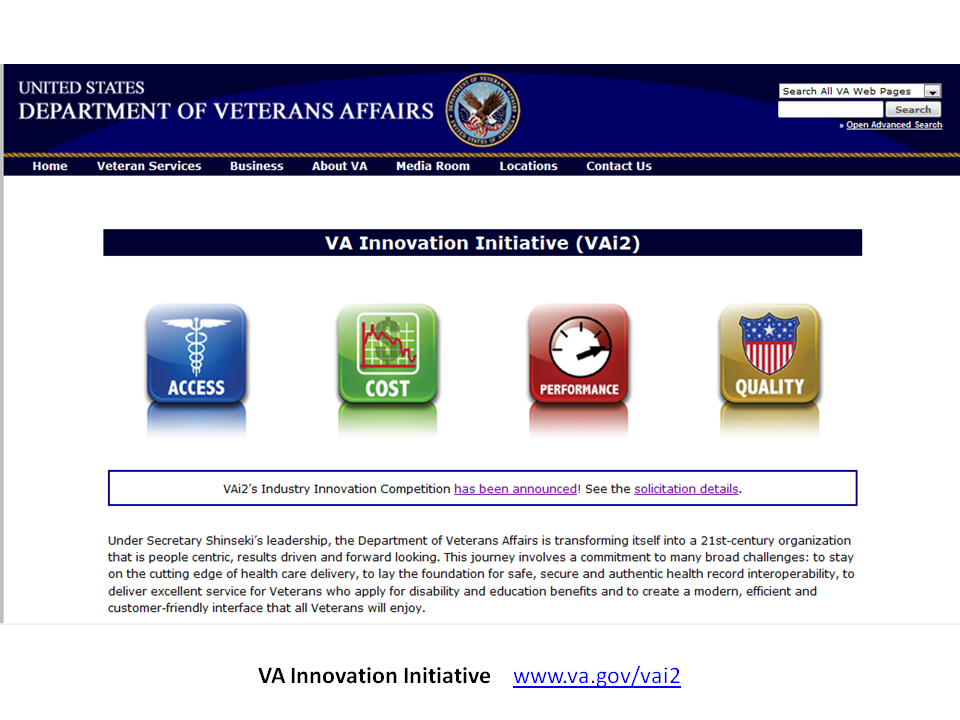Executive Summary from AHRQ Workshop:
“Managing Personal Health Information:
An Action Agenda”
Mary Mosquera reported in Government HealthIT on April 12, 2010 “The Agency for Healthcare Research and Quality (AHRQ) released a set of recommendations last week calling for health IT vendors to focus more of their attention on the needs of consumers in developing electronic health record systems.”
Per AHRQ Web site accessed March 13, 2010, “Managing Personal Health Information: An Action Agenda (PDF, 828KB) provides a framework for studying personal health information management and patient-centered health IT to advance research, implementation, and policy development in this field through specific recommendations and an action agenda. These recommendations will be useful for health IT researchers, industry, and policymakers.”
The executive summary of the report, dated March 2010, is excerpted below.
Background
“This report presents key recommendations and an action agenda developed during a 2-day workshop convened by the Agency for Healthcare Research and Quality (AHRQ) on July 27-28, 2009, entitled “Building Bridges: Consumer Needs and the Design of Health Information Technology.‖ The purpose of this event was to develop a framework for characterizing personal health information management (PHIM) that would inform the design of effective consumer health information technology (health IT) systems. The workshop brought together leaders from multiple disciplines, including health sciences, health informatics, information science, consumer health IT, and human factors research, with specific expertise in the fields of PHIM and/or health IT. The workshop moderator was Patricia Flatley Brennan, who also served as an advisor on this report.
“Through small-group discussions and presentations, the participants considered the diverse needs of different consumer groups with respect to managing their personal health information and how consumer health IT solutions can be designed to better meet those needs. Based on these discussions and presentations, the participants were asked to set an agenda for advancing the field of consumer health IT that would include specific recommendations for research, industry, and policy.”
Key Workshop Themes
“Effective management of personal health information empowers patients to actively partner with their health care providers in making important health care decisions, which can potentially lead to better health care and better health care outcomes. At the same time, PHIM involves a complex array of tasks that many consumers find challenging. These tasks may include tracking and integrating health-related information obtained from various sources; coordinating care across different health care providers; and making critical decisions about one’s health based on physician recommendations, test results, office visits, and other bits and pieces of personal medical information. The requisite tasks can be even more complicated for individuals with special needs, such as the elderly, whose health care needs often exceed those of the general population, and whose capacity to effectively manage those needs is typically compromised by poor health or other considerations.
“In light of these considerations, workshop participants were asked to share their understanding of consumers’ current PHIM practices, and to identify what more needs to be known about those practices in order to design better consumer health IT solutions. Participants were also asked to consider the extent to which currently available tools meet consumer needs, and what changes or design innovations would be needed to produce more patient-centered health IT systems. The following points highlight the main themes that emerged from the workshop.”
Defining PHIM
“Health care consumers manage their personal health information in countless different ways, and many factors influence the methods they use to perform the tasks and activities that characterize PHIM, such as health status, age, and attitudes about health and medical care. Moreover, a consumer’s health information management practices can change over time as his or her capacities, health status, family status, and needs change. PHIM can occur anywhere, anytime; in other words, it is not restricted to a single, isolated location or event like a doctor’s office or a medical appointment. All of these considerations have important implications for the design of consumer health IT systems. For example, they point to the need for systems that are flexible and accessible to different types of users and across different settings.”
Design Issues
“Consumer health IT solutions can play an important role in enabling patient-centered care, which the Institute of Medicine (IOM) defines as “providing care that is respectful of and responsive to individual patient preferences, needs, and values, and ensuring that patient values guide all clinical decisions‖ (IOM, 2001). In order to truly benefit consumers in this way, however, consumer health IT solutions must, first and foremost, take into account the particular needs of the consumer, rather than the needs of the physician, the insurance company, or some other entity that has a stake in the patient’s health care.
“To ensure broad access to these solutions, developers will also need to consider the particular needs, goals, preferences, and capacities of subpopulations like the elderly, the chronically ill, the disabled, and the underserved, which typically face one or more barriers that interfere with their ability or willingness to use consumer health IT systems. Specific barriers may include access to, and comfort with, technology; cognitive and physical impairments; health literacy; and cost. Until the needs of these subpopulations, who likely pose the most challenging design considerations, are taken into account, the IT solutions that developers create will likely fall short of promoting patient-centered care.
“Consistent with the principles of patient-centered care, these tools must also reflect respect for the patient. Specifically, these tools should, among other things, ensure that the patient decides who has access to his or her personal health information, and, for those tools that are interactive, they should communicate information to the patient in a way that the patient can easily understand.
“In order to ensure that consumers will actually use consumer health IT solutions, it will also be important to design those solutions to fit seamlessly into the user’s life.”
Important Steps for the Advancement of Consumer Health IT
“Workshop participants identified several steps that can be taken to promote innovation in consumer health IT. Key points included:
“Build a knowledge base about consumers’ PHIM needs and practices and related design principles. Additional research is needed on consumers’ PHIM practices and related design issues in order to develop consumer health interventions that can best support consumers in effectively managing their health and health-related information.
“Support more interdisciplinary efforts to drive innovation. Collaboration between academic institutions and the technology industry could lead to significant advances in consumer health IT, but too many factors prevent the two types of entities from working together. Within the technology industry, information sharing could potentially lead to better, more efficient designs, yet developers tend to avoid such alliances out of concern for the potential costs and risks of collaborative efforts. To facilitate more partnerships across and within academia and industry, mechanisms will need to be established that reward collaboration and protect the rights and investments of all stakeholders.
“Build a more robust health IT infrastructure to ensure access to all health care consumers. Innovations in consumer health IT will require the development of a robust infrastructure that can support the dissemination of new solutions across different platforms. This infrastructure will need to ensure that consumers have access to the technology regardless of their age, income, literacy level, or other potential barriers.”
Recommendations
A. Research
1. User Needs and Context
Recommendation 1a: “To inform the design of PHIM tools, technologies, and applications, research is needed to investigate: The needs and preferences of diverse user groups in different contexts., User goals, activities, and PHIM practices. User capacities (e.g., cognitive, physical, health literacy). User motivation (including beliefs and preferences).
Recommendation 1b: “To address current gaps in knowledge, researchers should develop a taxonomy of needs and users that can be mapped to design strategies
Recommendation 1c: “To inform the design of IT-based PHIM tools for the broader population, researchers should identify and study “expert‖ consumer groups (e.g., frequent health care consumers) as models.”
2. Improving Design of Consumer Health IT
“To improve consumer health IT design, researchers should:
Recommendation 2a: “Investigate the application of design methodologies used in other industries to PHIM.
Recommendation 2b: “Identify qualitative and quantitative metrics for evaluating good design.
Recommendation 2c: “Test design feasibility before development.
Recommendation 2d: “Identify and evaluate intervention strategies that encourage and facilitate adoption of consumer health IT among users.”
3. Evaluation Research
Recommendation 3a: “Rigorous research is needed to examine the impact of consumer health IT use on various outcomes (including behavioral, clinical, patient experience, provider experience, efficiency, and unanticipated outcomes), and the specific relationship of design to those outcomes.
Recommendation 3b: “New research methods and approaches need to be developed to evaluate PHIM systems that are already in the field.”
B. Industry and Policy
Recommendation 1: “To advance the development of innovative consumer health IT solutions, new mechanisms need to be established that can facilitate collaboration between industry and academia.
Recommendation 2: “To help support the development of consumer health IT solutions that meet the needs of all consumers, incentives should be established for industry to invest more resources in Research & Development of such solutions.
Recommendation 3: “To build awareness about PHIM among young health care consumers, grade-appropriate PHIM education should be incorporated into school curricula.
Recommendation 4: “Policymakers and industry stakeholders should agree upon and establish standard ethical guidelines for the use and reuse of personal health information.
Recommendation 5: “To promote the development and adoption of consumer health IT, new and existing policy implications need to be evaluated.
Recommendation 6: “To enable patient-centered care and ensure broad access to consumer health IT, policymakers and industry stakeholders need to identify ways to build a more robust health IT infrastructure.”
Related AHRQ Reports from October 2009
“New AHRQ-Funded Reports on the Usability of Electronic Health Record (EHR) Systems”
“To explore the opportunity to improve EHR system usability, AHRQ commissioned the creation of two reports that synthesize the existing research and evidence in this area and suggest common methods to evaluate EHR usability going forward.
“Electronic Health Record Usability: Evaluation and Use Case Framework (pdf) synthesizes the literature and best practices regarding the usability of EHRs, and it provides a set of use cases to evaluate information design in primary care IT systems.
“Electronic Health Record Usability: Interface Design Considerations provides recommended actions to support the development of an objective EHR usability evidence base and formative policies to systematically improve the usability of EHR systems.”





